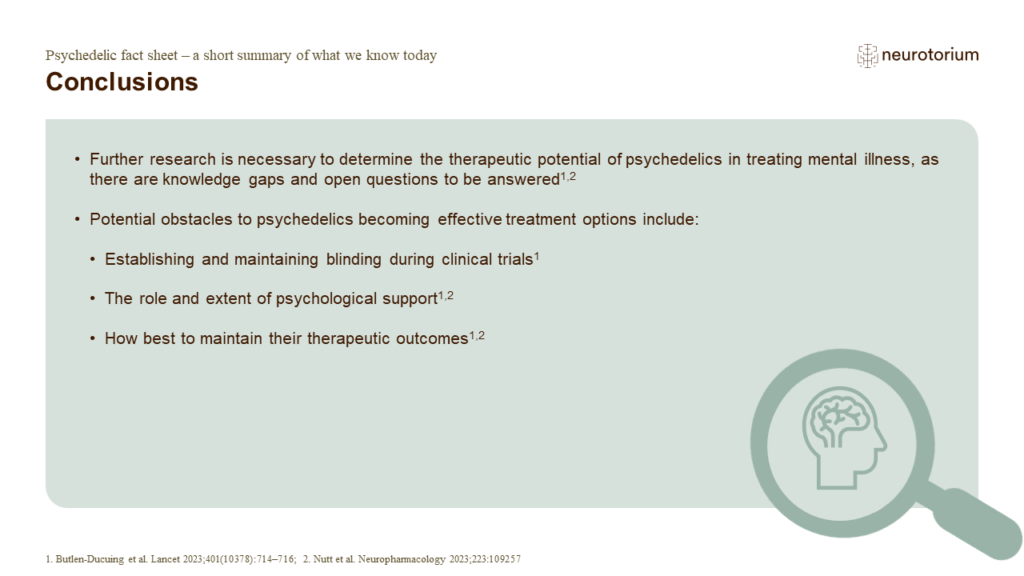Index for
slide deck
Introduction
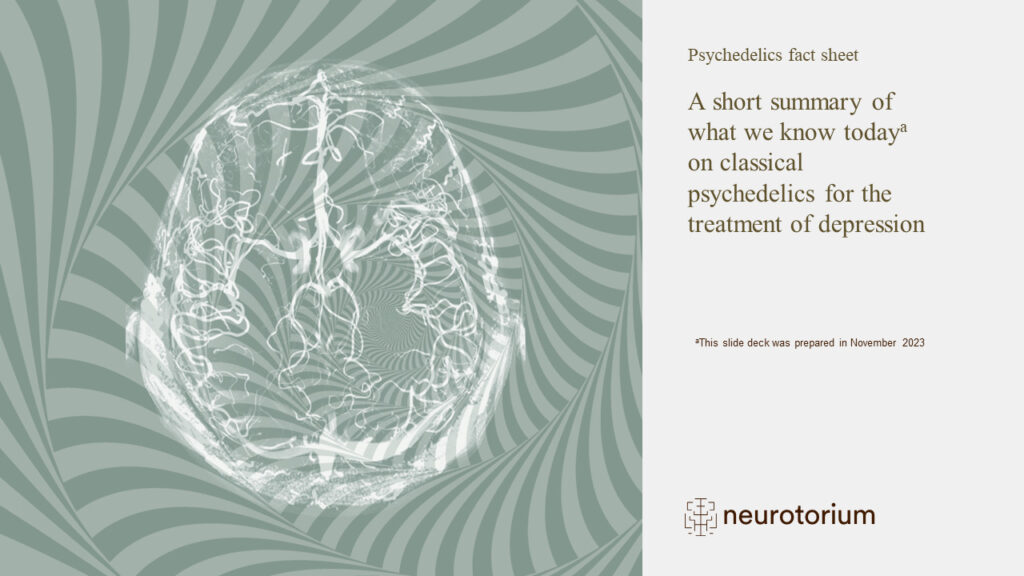
A short summary of what we know todaya on classical psychedelics for the treatment of depression
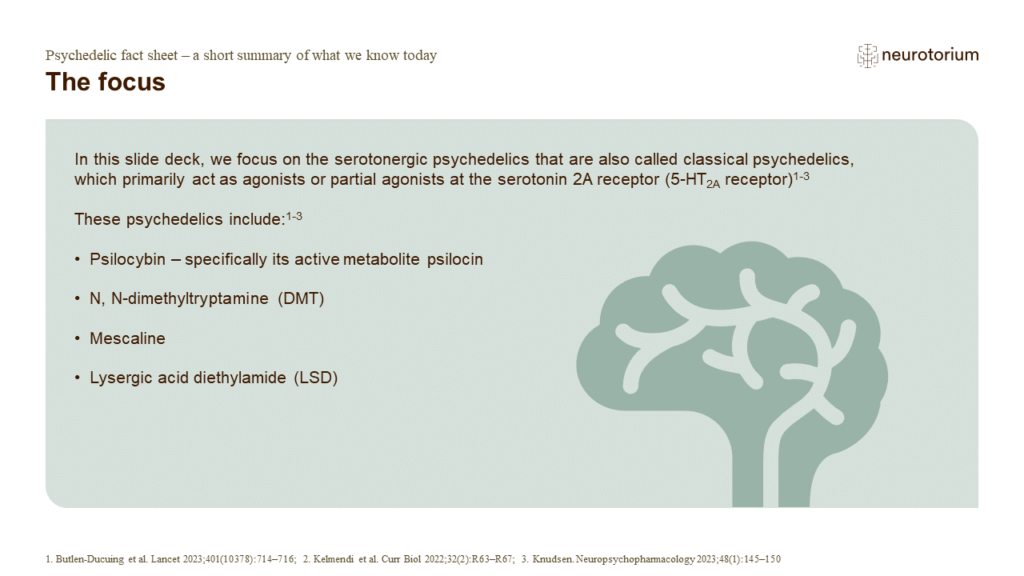
The focus
Glossary
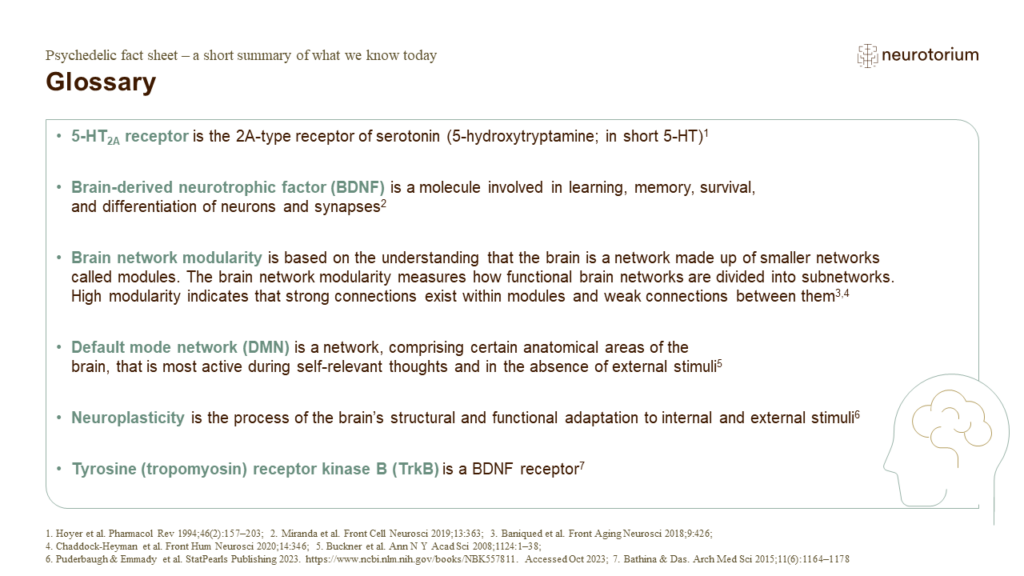
Glossary
Psychedelic fact sheet
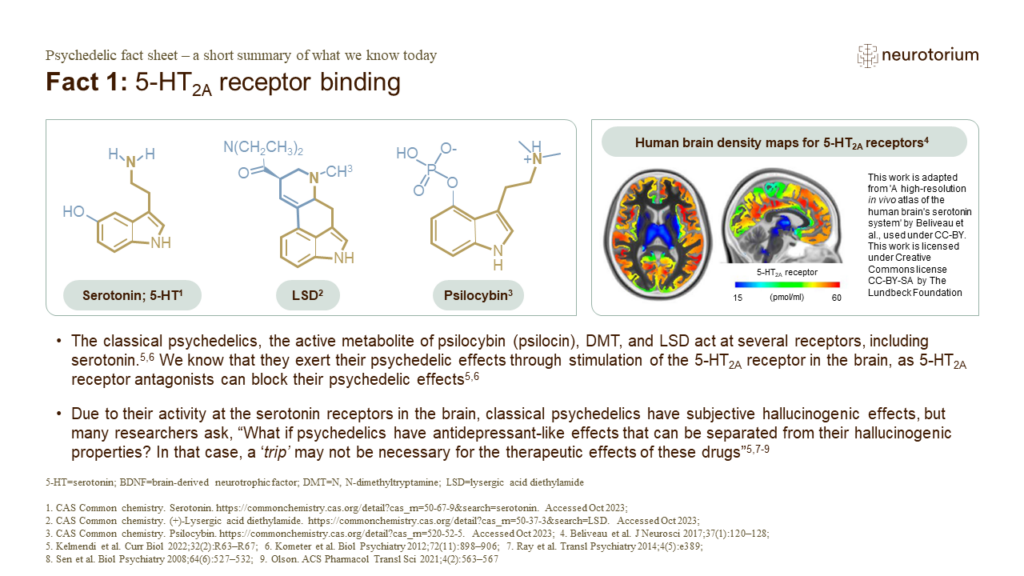
Fact 1: 5-HT2A receptor binding
References:
1. CAS Common chemistry. Serotonin. Available at: https://commonchemistry.cas.org/detail?cas_rn=50-67-9&search=serotonin. Accessed 11 Oct 2023.
2. CAS Common chemistry. (+)-Lysergic acid diethylamide. Available at: https://commonchemistry.cas.org/detail?cas_rn=…
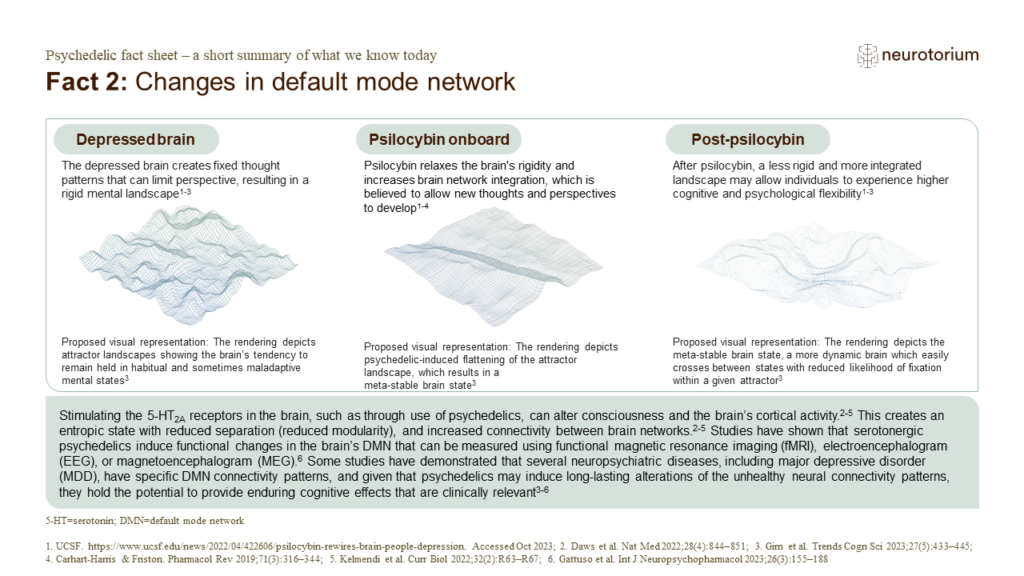
Fact 2: Changes in default mode network
References:
1. University of California San Francisco (UCSF). Psilocybin rewires the brain for people with depression. Available at: https://www.ucsf.edu/news/2022/04/422606/psilocybin-rewires-brain-people-depression. Accessed 21 October 2023.
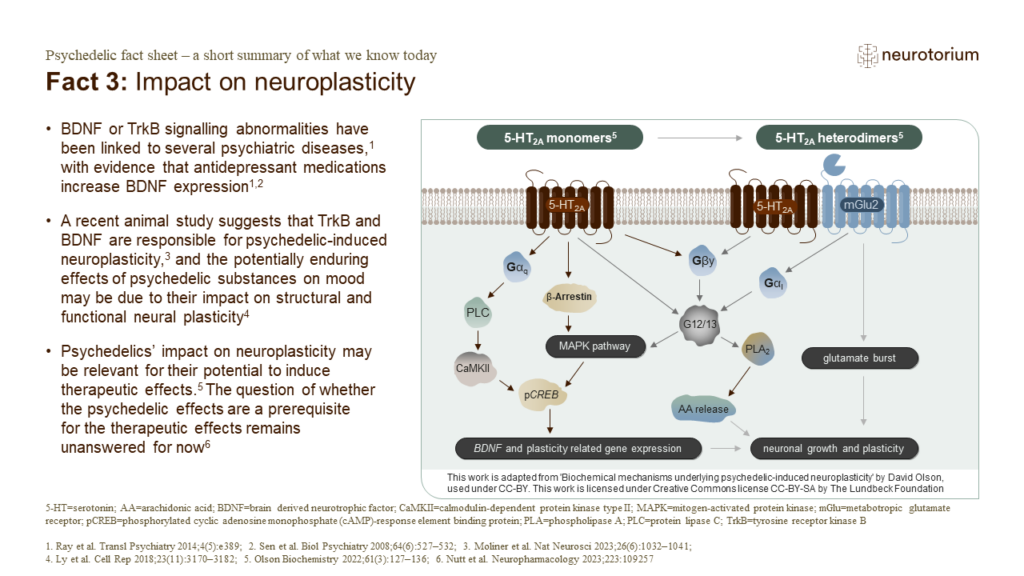
Fact 3: Impact on neuroplasticity
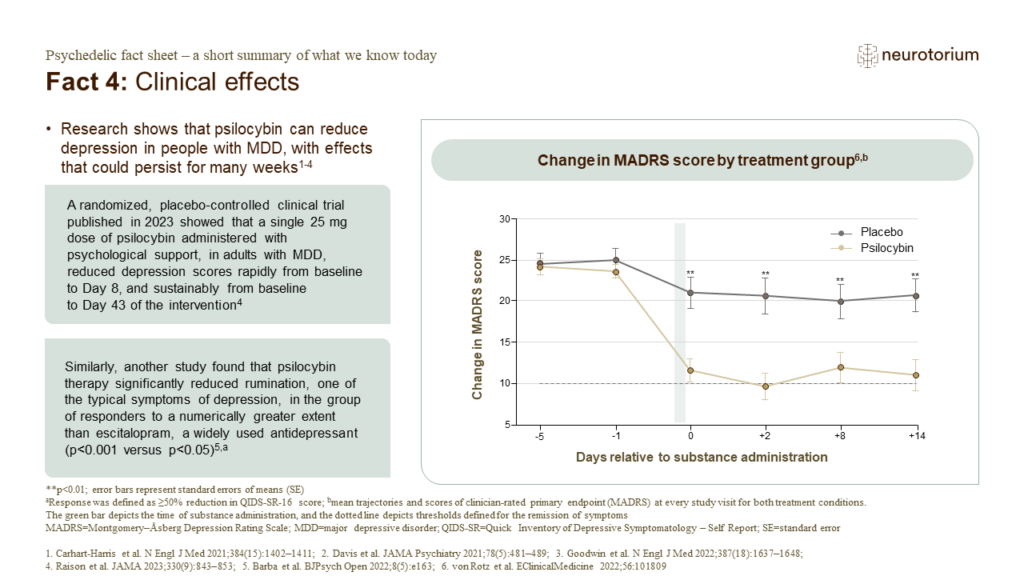
Fact 4: Clinical effects
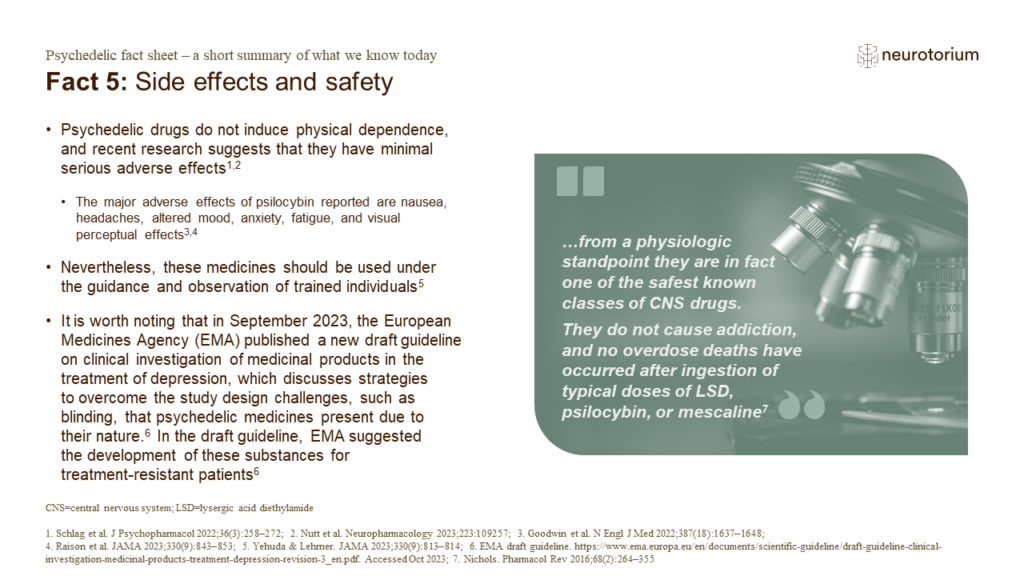
Fact 5: Side effects and safety
Conclusions
